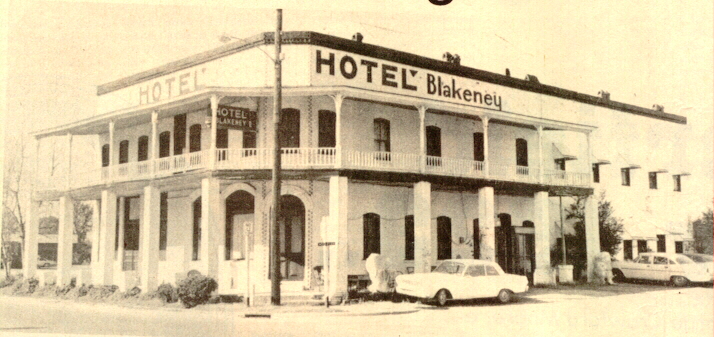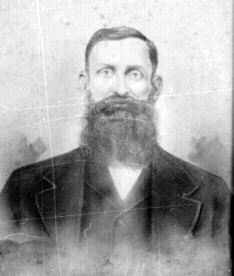Pageland,
the Watermelon Capitol of the World
The area now known as Pageland, has been continuously occupied since
1788, when Reece Shelby, Sr. received a land grant of 300 acres. He couldn't
resist the inducements offered by South Carolina, and left what is now
Union County, North Carolina, to live the remainder of his life in Chesterfield
County. Evan Shelby, Reece's father, immigrated from Glamorganshire, Wales
around 1730, and settled in Maryland. In the 1760's, Reece and his brother,
Moses, moved south to Anson Co., North Carolina. Both served during the
Revolutionary War, but it was nephew Col. Isaac Shelby who won acclaim
as one of the heroes of the Battle of King's Mountain, when Patrick Ferguson
and his followers were badly defeated. This is commonly referred to as
the turning point of the Revolutionary War.
After Reece Shelby's death (burial place unknown, but has a marker at
Waxhaw Presbyterian Church with Andrew Jackson's brothers and mother) the property went to his son, Reece Shelby, Jr. He in turn sold the land to
John "Jack" Blakeney and became known as Blakeney's crossroads.
Blakeney sold some of the land to his brother, William, some to the east
to Benjamin Vick, and some to the south to Ransom Pigg. After the War Between
the States, Jack Blakeney, sold the rest, plus other accumulated property,
to a carpetbagger named Henry J. Fox, who had been born in England. Fox
bought thousands of acres of land for himself and as representative of
a New York Mining corporation. The area was then known as Fox Place.
property went to his son, Reece Shelby, Jr. He in turn sold the land to
John "Jack" Blakeney and became known as Blakeney's crossroads.
Blakeney sold some of the land to his brother, William, some to the east
to Benjamin Vick, and some to the south to Ransom Pigg. After the War Between
the States, Jack Blakeney, sold the rest, plus other accumulated property,
to a carpetbagger named Henry J. Fox, who had been born in England. Fox
bought thousands of acres of land for himself and as representative of
a New York Mining corporation. The area was then known as Fox Place.
By
1900, Fox was long gone, coerced along by Klan activity, and once again
what was to become Pageland was called Blakeney's Crossroads. In the early
1900's the only houses at the old crossroads were the old Fox house and
the George Richard Sowell residence. Then it was decided that the Cheraw-Lancaster
Railroad would be laid near the cross road and soon afterward the town
was born. A depot was erected when the railroad reached there in 1904.
The railroad itself continued construction to Crow/Burk but never reached
its destination at Lancaster. By 1940, the railroad was no longer needed
and was closed.
George Richard Sowell
 Chesterfield
Land & Development held an auction on December 19, 1907, selling off
lots for development, after they had hired Mr.
Guess, an engineer, to lay
out the town. The 157 inhabitants of the to be town petitioned for incorporation
on December 3, 1907, which was granted January 11, 1908. Pageland was named
in honor of Adolphus High Page, the C&L Railroad engineer responsible
for the railroads placement through the Crossroads. Chesterfield
Land & Development held an auction on December 19, 1907, selling off
lots for development, after they had hired Mr.
Guess, an engineer, to lay
out the town. The 157 inhabitants of the to be town petitioned for incorporation
on December 3, 1907, which was granted January 11, 1908. Pageland was named
in honor of Adolphus High Page, the C&L Railroad engineer responsible
for the railroads placement through the Crossroads.
As the number of inhabitants implies, the town grew quickly with families
that lived in the area and families from other counties. Families such
as the Carpenters, Clarks, Tuckers, Catos, Mangums, Watts, Rallings, Ogburns,
Autrys, Edgeworths, Myers, Smiths and others saw the opportunities the
new town promised and invested. Being
at the crossroads, Pageland became a popular stopover for travelers. The
Blakeney Hotel, which had been built in 1910, and originally housed a bank,
feed store, and casket shop, was the place to stay. Known widely for its
good food, it also was the home of a talking parrot. Unfortunately, the
bird knew mostly profanity.
Pageland has continued its growth and somewhere along the way became
known as the Watermelon Capitol of the World, holding an annual celebration
in honor of the fruit in July, which brings in thousands of visitors. However,
Pageland was not just an agriculturally based town; industry also found
a home.

Today, Conbraco Industries, GTE Sylvania Wiring Devices, SLS Corp.,
Chesterfield Yarn Mills, Comfy Home Furnishings, Davisco Inc., Yarn Industries,
Grendel Corp., and Tucker Lumber Company all have plants in Pageland. And
the newest member to this group is a Wal-Mart Distribution Center that
encloses some 20 odd acres just north of town, that opened this year.
The 2,666 residents of Pageland enjoy their small town atmosphere, but
because of its close proximity with Monroe and Charlotte, North Carolina,
lacks none of the benefits of a major city.
|